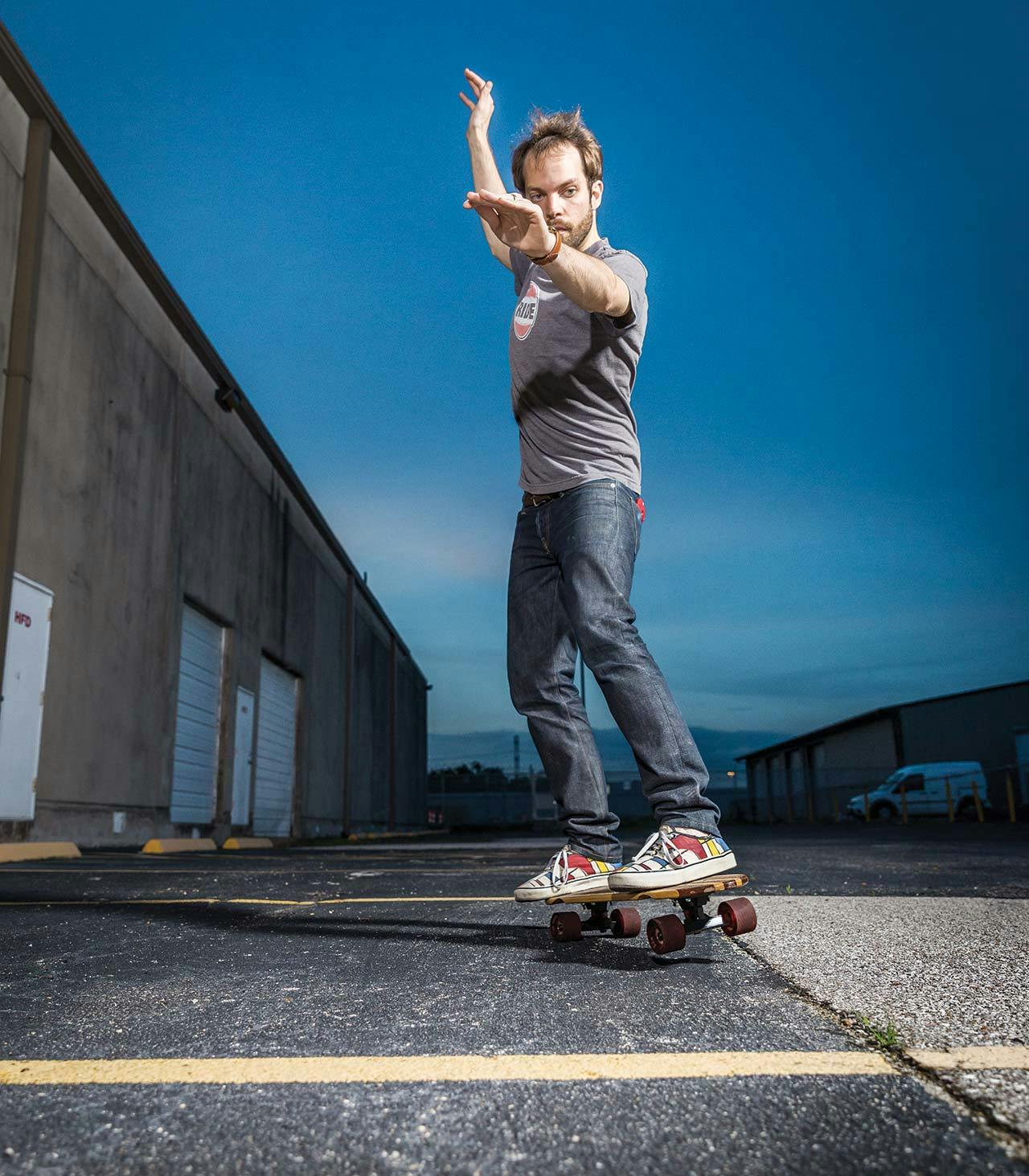When Jake Eshelman moved to San Antonio in 2007 to attend Trinity University, the Virginia native thought he’d become a trial attorney. Then he met a girl. It was his now wife, visual artist Margaux Crump, who helped him connect with his artistic side. “I started taking classes in paper-making and printmaking, which completely changed my perspective and showed me how making something by hand can be cathartic,” he says. Post-college, Eshelman began working alongside his father-in-law, Hugh Crump, at Artist Services, a museum-quality framing business in Houston. He loved listening to Crump’s stories about making skateboards with pals as a kid. They’d steal their dads’ power tools, dismantle roller skates, and slap the wheels onto pieces of wood. They’d ride, often barefoot, all around the bayous. “There is something extremely innocent but also instinctual about that DIY spirit—to just go and make something new with what you have around you,” says Eshelman, who’d done a little skateboarding himself as a youngster when it was too warm to snowboard.
Now a creative director for a Houston ad agency, Eshelman made his first skateboard on a whim in 2013, after noticing the scraps of wood lying around Artist Services that would often go into the dumpster. After a month of experimenting, he was encouraged by family and friends to start selling his slim, vintage-inspired boards. He coined the name Side Project Skateboards because he wanted his hobby to stay just that—a hobby. “People always ask me when I will do this full-time, and my response is that I don’t want to, because then it wouldn’t retain the magic for me,” he says. “If I had to rely on this to eat, I would be more hesitant to take risks.”

Q&A With Jake Eshelman
What’s the first step when making a board?
It’s a very organic process. It all starts by sourcing the wood, which is largely saved from the dumpster or otherwise salvaged. These pieces can be pretty beat-up, so I clean them up before laying each strip out to assess and arrange them. Then I try to let the different woods do the talking and pair them in a way that best highlights the beauty of the various wood grains.
What’s next after the wood is arranged?
I glue the pieces together, then plane and sand them to form what looks like a conspicuously long cutting board. After tracing the board’s shape onto the wood, I cut it out on the band saw and sand the edges and any wheel wells smooth. I finish each board with one coat of oil and two coats of marine-grade varnish. Then I add the trucks, which are the hardware used to attach the wheels, and Chromexcel leather riser pads tanned by the historic Horween Leather Company, in Chicago, which keep the wheels from rubbing the deck. For the grip, I apply a powder made of broken glass to the top so you can still see the beauty of the natural wood grain underneath.

Do you paint your boards?
That’s actually a common misconception about my work. I don’t usually use any paint on my boards, not counting the custom indigo stain I created. The colors you see are different species of wood glued together side by side. Since each wood species has its own distinct colors and patterns, I’m not interested in manipulating them further. I’d rather highlight the unadulterated character of my materials as opposed to covering them up.
What about the act of skateboarding do you enjoy most?
Not falling.
Anything else?
There’s a point in pretty much any activity when you completely tune out and lose yourself in what you’re doing. Psychologists call it flow, and it’s the key ingredient to happiness according to lots of people with doctorate degrees. I’d say that’s what I enjoy most about skateboarding—and making skateboards, for that matter. I also like the challenge and creativity of it, especially when it comes to finding ways to experiment and try something new.
For more information, go to sideprojectskateboards.com.







